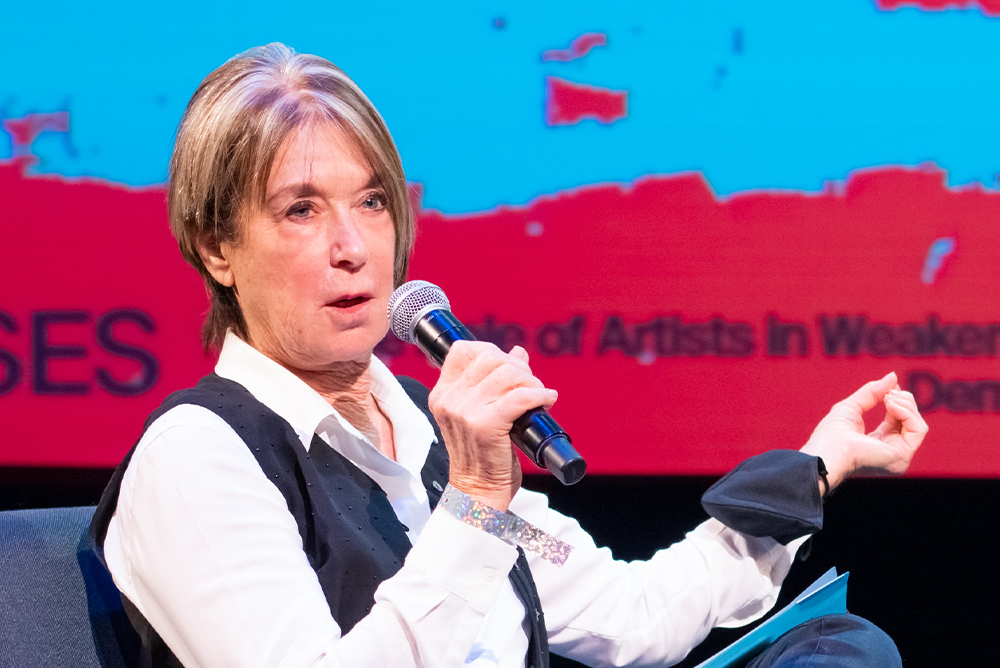
Photo by Aaron Perez.
Suzanne Lacy is an artist, educator, writer, and professor at the USC Roski School of Art and Design. Before taking part in the Zócalo, Thomas Mann House, and L.A. Review of Books program “Must Artists Be Activists?”—part of the two-day conference “Arts in Times of Crises”—Lacy joined us in the green room to talk about critique, crying, and craft.
What’s the earliest creative act that you can remember doing?
I was always doing creative things. I do remember in high school, for a school banquet, I got a tractor to bring in these giant columns—you know like the ones that are out in front of LACMA? I got a bunch of those and dragged them into the school banquet, and did all this really wacko stuff. Created a total environment.
Was the school on board with that?
Yeah, you know, small schools—they kind of let you do anything.
You were on faculty at the late, great Woman’s Building. What’s one memory from your time there that stands out?
Critiquing students with Deena Metzger. We had one student at a time come in. And Deena and I, we were known as the people who always managed to–not in a bad way—to get the women crying when they talked, so we would bring a box of Kleenex with us when we did our critique sessions.
When you say crying “not in a bad way,” was that because of untapped emotions?
Yeah. The whole process of the critique wasn’t to criticize the aesthetics but to try to make the aesthetics map the interiority, and the interiority of experiences that people really hadn’t come to terms with. So the sort of hidden experiences. A lot of experiences around violence.
Crying in a professional setting is something that can be so stigmatized, and I love how you present this as a normal thing that can be part of the critique process.
Yeah, like here’s a Kleenex, go ahead.
You coined the term “new genre of public art.” What’s one recent work of art under that definition that you’re thinking about at the moment?
I have 100 examples at the end of [Mapping the Terrain] of different kinds of artworks, but the one that comes to mind is one of the very first ones, which is Joseph Beuys, “How to Explain Pictures to a Dead Hare.”
You’re from Wasco, California. What’s one way that being from there has influenced your work?
I’m really working class. My dad was a mechanic. My mom was a clerk. And I just think I see things from that perspective. So I think the whole social equity project that I’ve been involved with my entire life still comes from looking at the prejudices in that small town—the racial prejudice, and then eventually the gender prejudice. And class. We don’t talk about class enough.
What’s your best advice for emerging artists today?
Understand you’re in it for the long road. It’s not particularly an easy road, particularly economically. You need to think deeply about who you are, and what you want to express and how that comes out in different forms. And don’t get discouraged when you don’t get a grant. Because you’re likely to get more discouraged than encouraged. Just stay connected to the making and what you care about.



